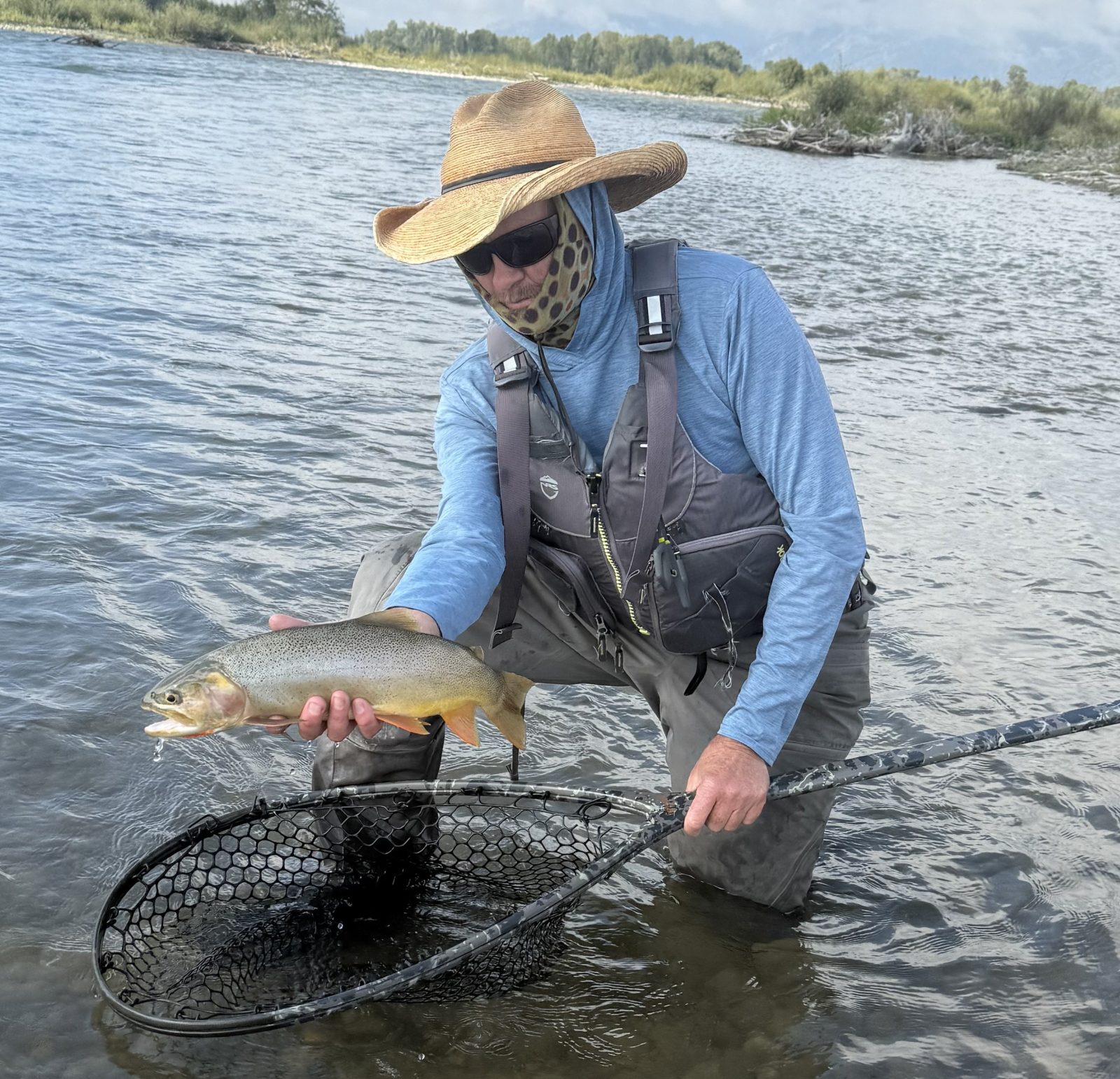
Snake River
Flows from Jackson Lake Dam stand at approximately 2,250cfs. Cooler temps and wetter weather in the area has put Hecuba and mahogany duns on the list of the most consistent emergences on the Snake. PMDs and Claassenia are still out in decent numbers as well. And tricos are still popping from Jackson Lake Dam down a little past the Buffalo Fork for a couple of hours each morning.The sweet spot has been between 11am to 2 pm, although there have been days when the post-2pm timeframe has been solid and other days when the action starts as early as 10 am. Almost every form of holding water is producing. Focus primarily on the inside turn of riffles with fast currents, the head of seams, shallow troughs with slow currents, confluences, and side channels.
Streamers are starting to produce in a more consistent fashion. Moderately sized patterns are working far better than anything else. Banks, troughs, submerged structure and elongated riffles with slow currents at the tail are outperforming other water, although dumping confluences and the tail of confluences can produce almost equally well some days.
South Fork
Flows from Palisades Reservoir stand at approximately 8,7000cfs. Some are saying that action has slowed on the South Fork but there can still be solid production for those who stay focused and think outside the box. PMDs are the main fare in the afternoon hours and mutant stones dominate surface action in the early morning hours from around 7am until 10am, particularly on the lower reaches from Wolf Eddy down to Twin Bridges. In the morning use surface attractors target to flats, parallel drop-offs, troughs, seams, and banks with slow to moderate currents. In the afternoon, flats, riffles, confluences, side channels, the tail of seams and eddies are key waters to focus on with mayfly adult and emergent patterns.
Nymphs can produce as well as surface imitations in the same waters if using stonefly imitations (particularly Pat’s Rubber Leg, Kaufmann’s Stone, and 20-inchers) and PMD imitations like Psycho Princes, Flashback Pheasant Tails, and Psycho Mays).
Streamers have been hit-or-miss but working well enough to fish throughout the day if one is willing to change things up in terms of the water column being targeted and presentation. Both larger and moderately sized patterns are working well. Focus on the two to four foot depth of the water column, but if that is not producing, go higher – the one to two foot level primarily. Slow to moderate currents are providing more action than faster currents, but slow to moderate retrieves are clearly working better than faster retrieves.
Flat Creek
Infrequen PMDs and the smaller mahogany duns are out and hatches have been decent most days. Tricos are out as well but very much waning. Expect good action from around 10:30 am until dusk with surface patterns on seams, at the head of riffles, and along confluences. Nymphs are working well in the same water as well as along undercut banks and submerged structure. Think primarily mayfly nymphs, caddis and midge larva/pupa patterns, and swinging dragonfly/damsel nymphs.
Salt River
The Salt remains pretty low for this time of year but there is still good action on the high gradient reaches and the low gradient sections can offer very solid action on those days with cloud cover and precipitation. Tricos are still popping in the morning for about an hour and a half. Infrequen PMDs are also around in the afternoon. Expect to see some of the last carpenter ants of the year around for another week or two. The most productive water for both surface patterns and nymphs include eddies, seams, and troughs. Small, single foam attractors – #12 to #14 – can work just as well as more imitative mayfly patterns and support small chironomid and mayfly nymphs in most waters worth targeting.